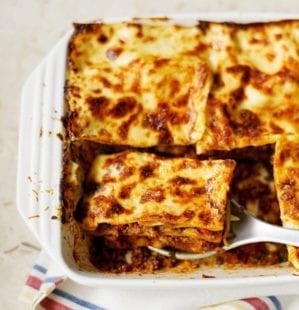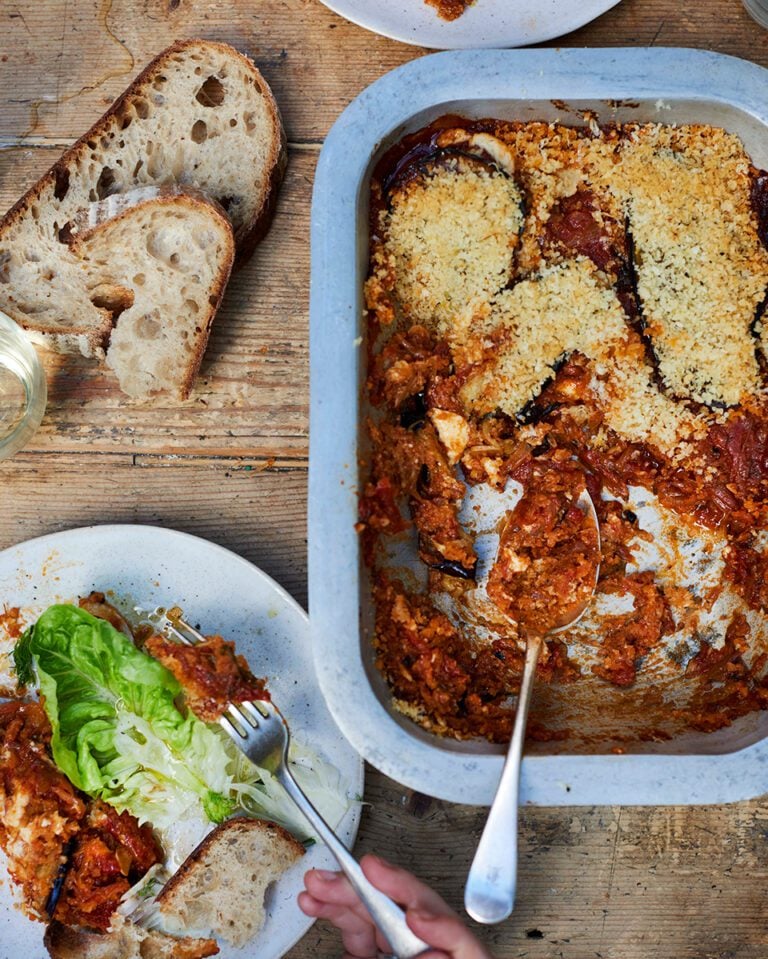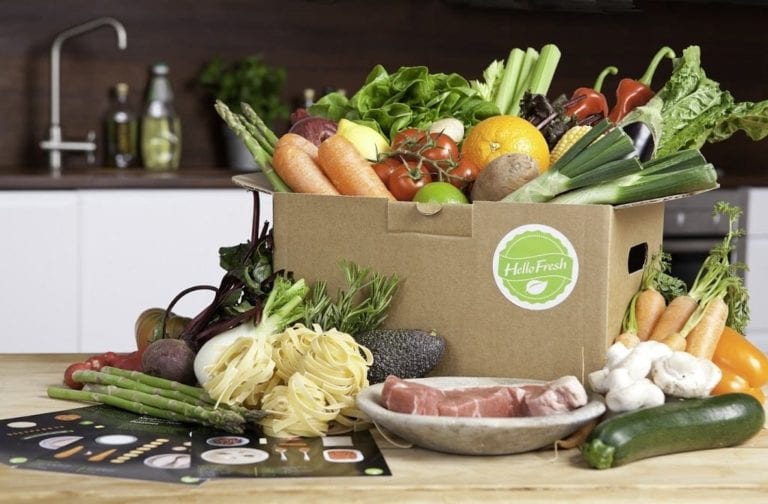Who’s cooking dinner? We speak to the people behind your next ready meal
We eat a staggering £3.8 billion worth of ready meals a year, and the category shows no signs of slowing down. The concept has come on leaps and bounds since its origin in the TV dinner, but who is actually producing these meals? Our writer Lucy Dearlove speaks to some of the most popular producers to find out…
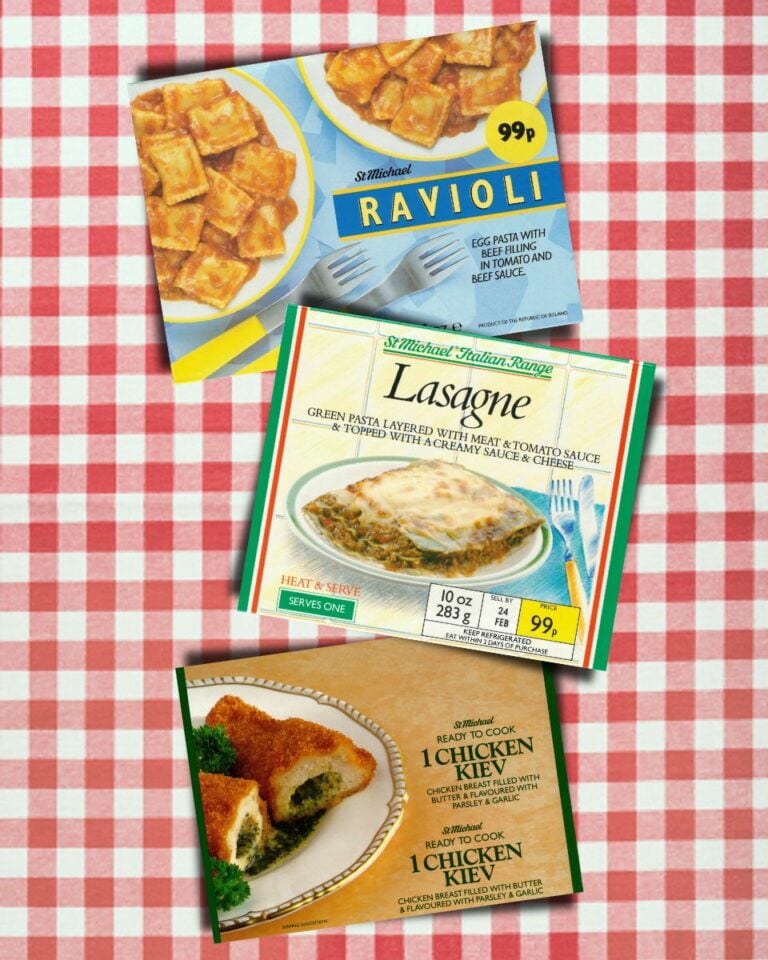
Although I love to cook, ready meals have been the scaffolding on my home life for as long as I can remember, holding things together when things get too busy or overwhelming to maintain a cooking-from-scratch routine. At these times I – and I imagine many others – like to reach for a microwaveable chicken tikka masala or a carton of chilled soup over, say, a packet sandwich or a bowl of cereal. Particularly during the stress of an overflowing calendar, a hot meal brings comfort and sustenance. But recently it’s occurred to me that I know very little about how this food is produced, considering I generally care a lot about where what I eat comes from. I mean, is it robot arms squirting mashed potato into tubs?
Stepping inside the factory
Not according to the frozen meal company Cook. I’m halfway round a tour of the pies and pastry kitchen at Cook’s Sittingbourne headquarters with productivity analyst Steve Philips and brand director Claire Postans. They point out the chef, whose name as per Cook convention will be on the packaging of this batch of signature chicken, leek and ham pie, one of the company’s bestsellers. No robots here – I watch him wielding a steel paddle with a square end like a seaside spade and vigorously stirring a roux in one of the huge stainless steel basins dominating the room, each containing a bechamel at a different stage.
I think Claire and Steve are both amused by how visibly delighted I am by this room, particularly as my ear-splitting grin is stylishly accessorised by a red hairnet. It’s clearly a carefully designed professional environment with lots of high-grade, spotlessly clean equipment. But seeing the chef concentrating through the clouds of steam, moving quickly and gracefully between the bubbling pots – just like I try to do at home when I’ve bitten off more than I can chew with the cooking – doesn’t make it feel like I’m in an industrial environment. It feels like a giant, charming kitchen laboratory.
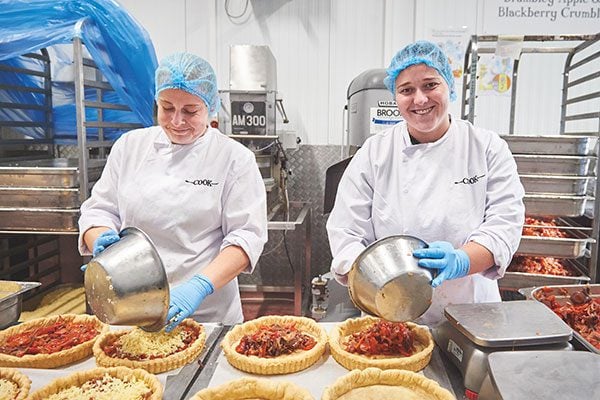
It’s easy to assume that ready meals, anonymous in their plastic trays and film, lack any sort of human touch. Part of a wave of convenience-led products invented in the mid 20th century, they’re a contemporary culinary phenomenon. They’ve come a long way since their origins in the American frozen TV dinner; in 2022, British retailers sold around £3.8 billion worth of them. The 1979 launch of the M&S chicken kiev (still going but now as kyiv) is often touted as an early example of the nation falling in love with prepared food, but even earlier than that came boil-in-the-bag ravioli and frozen rogan josh; it’s now a full half century that companies have been bringing ready meals to the British public.
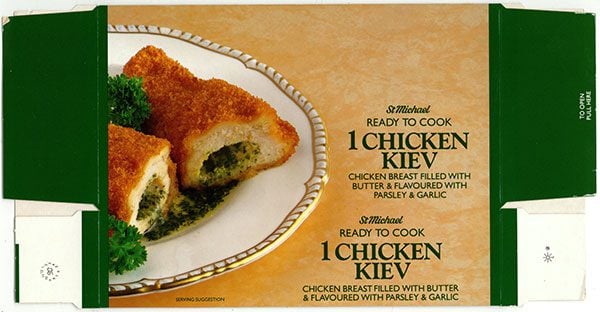
Scale and process
These days, M&S works hard to tread a line between innovation and familiarity. Lasagne is still a bestseller, but the company recently launched a microwaveable laksa that’s been a real hit. New concepts can be more ingredient-led than you might expect from a major high street retailer. On a video call with Russ Goad (development and innovation chef) and Sarah-Jane Large (lead product developer), they wax lyrical about a recent research trip to Italy, where the entire team fell in love with a specific small-batch passata they’re hoping to work with in future product development.
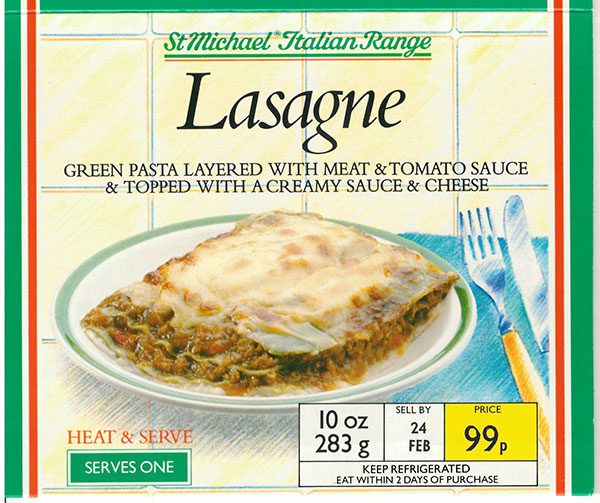
Both M&S and Cook’s dishes begin as small batches, which are then carefully scaled up, because the final recipes have to work consistently for thousands of portions. George Wood, lead development chef at Cook, explains that this is done in stages, with the ‘200 batch’ being a particularly important milestone in ironing out the process of increasing quantities.
Certain ingredients behave unpredictably when multiplied, George tells me, such as wine that needs to be cooked off, or chilli. All production is done in house, and the development chefs directly oversee around 10 full batches – roughly 1,500 portions each – of the recipe before fully handing it over to the kitchen. Even then, they still attend Taste Panel, a thrice-daily meeting where representatives from each department quality control every single batch of dishes cooked on shift that day.
At M&S, production is contracted out to selected external suppliers, where there’s often a lot of back and forth on the scaling process, sometimes with creative solutions. While working on the laksa, the development team and the kitchen staff discovered that if they added half the seafood stock at the beginning and half later on in the process, rather than just cooking the whole lot all the way through as they had in smaller batches, it lifted the whole dish.
Small business successes
Scale isn’t such a consideration for the wave of smaller companies entering this market over recent years, selling smaller batch meals direct to customers. East London’s DabbaDrop dispatches a set menu of home-style vegetarian Indian dishes to around 1,300 people each week, all packaged in their signature dabbas, metal food tins originating in Mumbai.
Customers’ dabbas are picked up each week to be refilled, avoiding plastic waste. Another new kid on the block, HomeCooks, began in one of the Covid lockdowns when its four co-founders started a Facebook group offering dishes cooked locally to people in their North London neighbourhood. At a time when many people were stuck at home and bored with cooking for themselves, the novelty of local meal delivery really struck a chord, but it didn’t end there… As things opened up again, HomeCooks branched out into nationwide delivery and started recruiting more chefs.
HomeCooks dishes are packaged similarly to conventional ready meals, and while the chefs prepare the food in small batches in their own kitchens, it’s then flash frozen and all orders are sent out from HomeCooks’s central freezer storage, so you can pick as many options as you like from different chefs. On an impossibly busy week recently, Sen Noods’ Hong Kong curry noodles with chicken and Lidgate Butchers’ steak and ale pie saved me from two nights of cereal for dinner.
I had always thought of prepared meals as a proxy for home-cooked ones, perhaps because in the past the dishes have leaned towards comforting classics, but HomeCooks co-founder Josh Magidson has a different way of looking at it. His previous ventures have been predominantly in takeaway, and he saw first-hand how the order-on-demand delivery system often mistreated chefs. “It’s unpredictable, it’s inefficient, and the conditions are often not so good,” he tells me. “And we found that [by cooking for HomeCooks] the chefs could make a lot of money and cook creatively by making food in batches.”
And for the customer, it’s becoming harder and harder to find affordable takeaway options. The annual average spend on takeaway food per person rose from £452 to £641 between 2019 and 2021 alone, and with the rising cost of ingredients since then, it’s likely to be even higher now. So perhaps it’s more as a replacement for a previous favourite takeaway that people are looking for convenient, tasty food that doesn’t cost a fortune: something HomeCooks and the other ready meal producers I’ve spoken to can offer.
As I spoke to the meal producers for this piece, one thing that became apparent was the care that goes into the dishes they make. Although it might not always be obvious to us, there is deep care and attention inherent in every step of developing these dishes. From dreaming up new meal ideas to sourcing ingredients, to perfecting each batch, even in these sometimes large-scale processes, an even fleeting look behind the scenes will reveal the personal touches embedded.
Subscribe to our magazine
Food stories, skills and tested recipes, straight to your door... Enjoy 5 issues for just £5 with our special introductory offer.
Subscribe
Unleash your inner chef
Looking for inspiration? Receive the latest recipes with our newsletter

